Bee identification can be very hard, but that doesn't mean all bees are hard to recognize. Below are 8 common species that are quite distinctive. Think of these as the cardinals and chickadees of the bee world.
Not included are honey bees and the bumble bees, which are another group that, with practice, can be relatively straightforward to identify. See our bumble bee ID resources here.
The text for each species below includes the necessary features for a confident ID of females and a sentence or two about when and where to find them. In most cases, males are harder to ID and/or have a different set of distinctive features. Click each box for more information. Several of these species are probably present in most every VT neighborhood. Can you find all 8 next season?!?
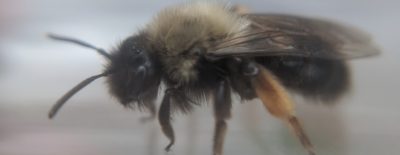
Clark's Mining Bee (Andrena clarkella)
Pale yellow hairs on thorax and the first segment of the abdomen (T1) plus the bright orange hairs on the hind legs. This is an early spring, willow specialist. Image courtesy Spencer Hardy
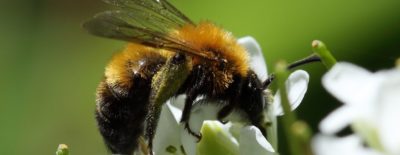
Milwaukee Mining Bee (Andrena milwaukeensis)
Deep orange hairs covering the thorax and first two abdominal segments (T1 + T2). This is a late spring species associated with flowering shrubs in and around hardwood forests. Image courtesy Michael Veit.
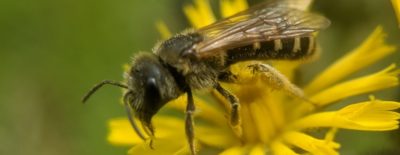
Ligated Furrow Bee (Halictus ligatus)
The disproportionately large head and cheek are usually noticeable. Also look for a distinct spine on the rear corner of the cheek and complete white bands on both sides of the "joints" between abdominal segments. Found all season in a variety of habitats. Image courtesy Spencer Hardy
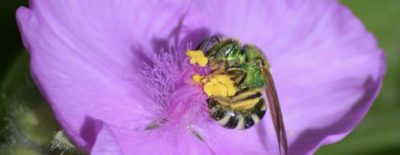
Bicolored Striped Sweat Bee (Agapostemon virescens)
The black and white abdomen with a bright green body is unique. Common all season in a variety of habitats. Image courtesy Bernie Paquette.
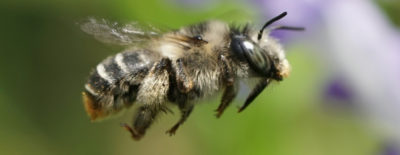
Orange-tipped Wood-digger Bee (Anthophora terminalis)
The orange tip on the abdomen is distinctive but can be subtle. Look for a dingy, plump bee that's spends a lot of time either hovering or resting on a leaf. June - Sept in shrubby areas. Image courtesy Amy Schnebelin
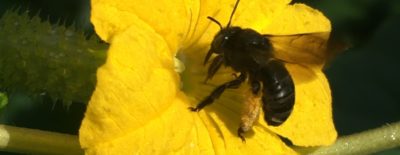
Two-spotted Long-horned Bee (Melissodes bimaculatus)
No other large bee is all black and hairy. Females have two white dots near the end of the abdomen that are also distinctive (if visible). Currently limited to the warmer valleys, and active July-August. Image courtesy Spencer Hardy.
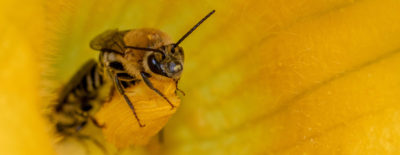
Pruinose Squash Bee (Peponapis Pruinosa)
You will likely have to look inside a squash flower to find this bee. The pale orange hair is similar to a honey bee, but squash bees have longer antenna and much thicker hair. July- early Sept. Image courtesy Spencer Hardy.
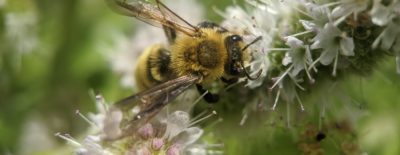
Hairy-banded Mining Bee (Andrena hirticincta)
The complete coat of bright yellow hair eliminates almost all other bees. Also note the dusky wings held at a 45 degree angle. Most often found on goldenrod, active from late July through early September. Image courtesy Spencer Hardy.






